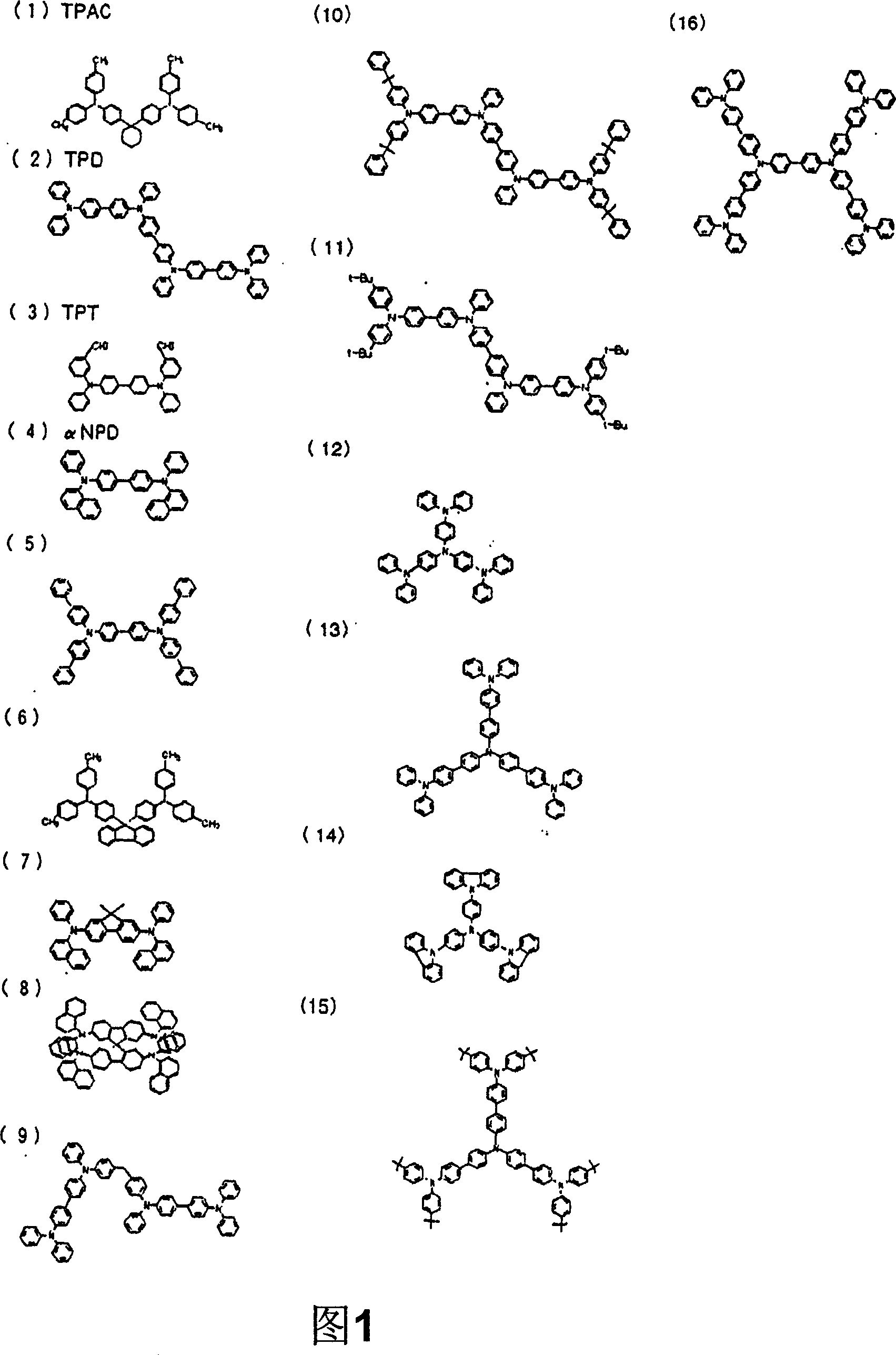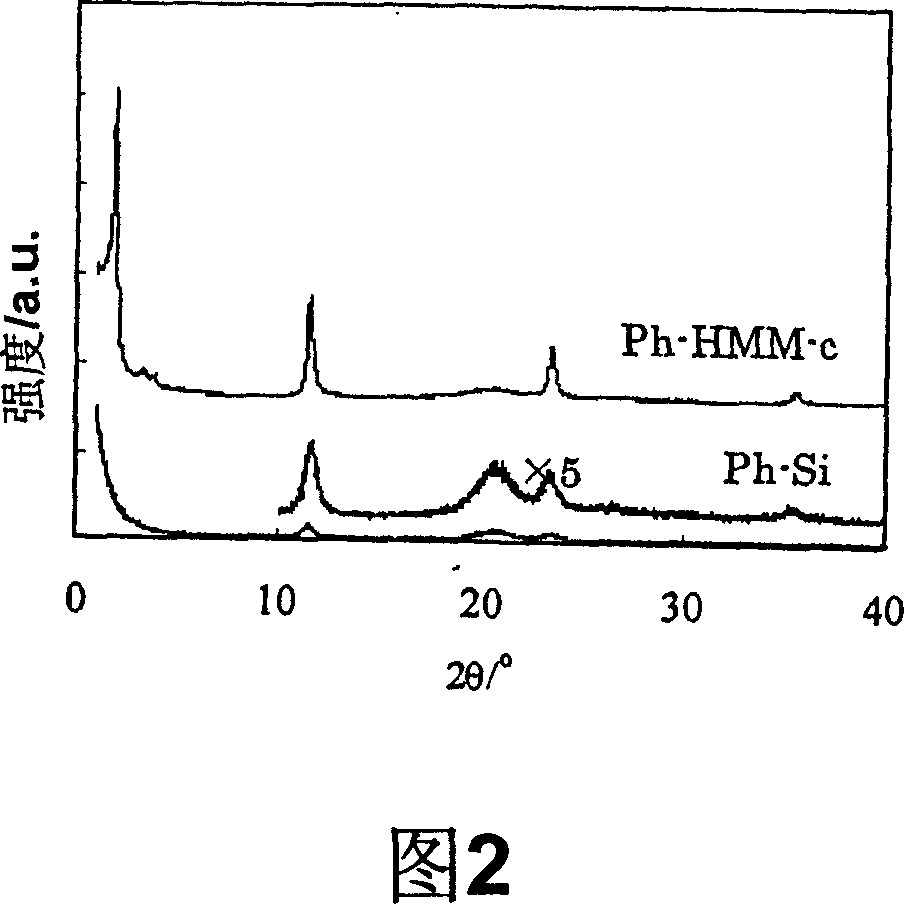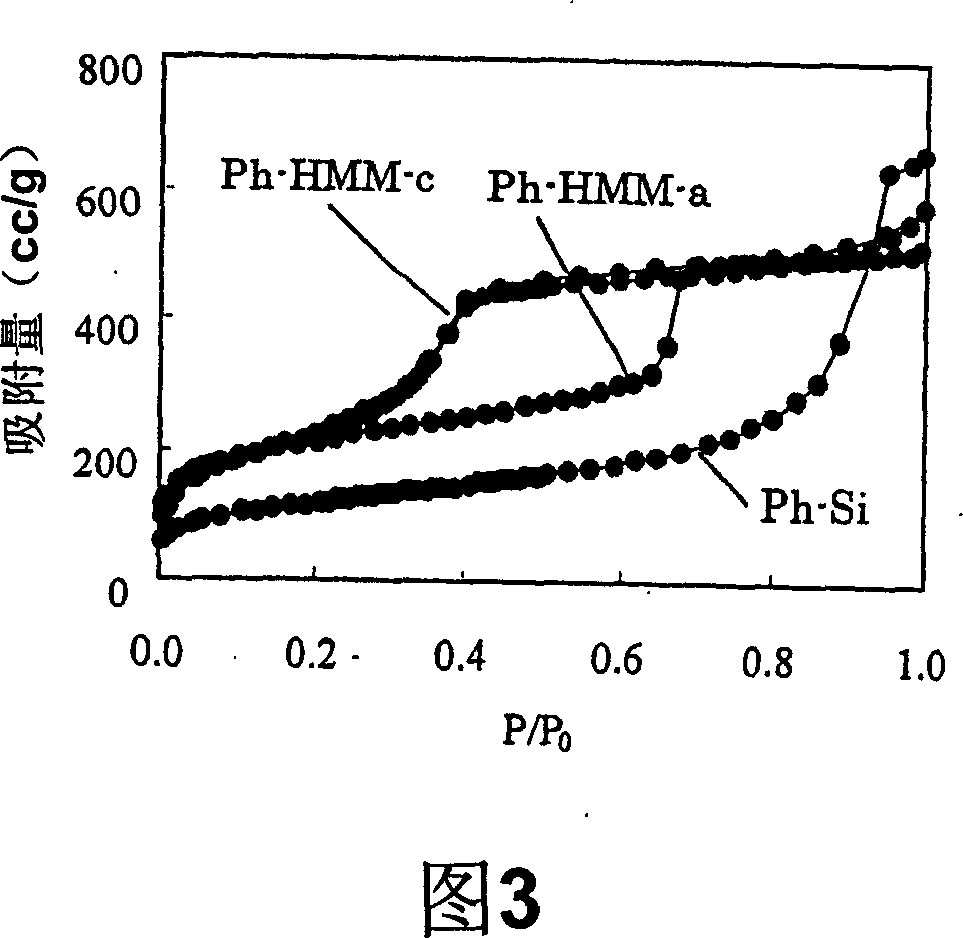Luminescent material and method for producing same
A luminescent material and fluorescence technology, applied in luminescent materials, electroluminescent light sources, chemical instruments and methods, etc., can solve the problems of inability to obtain luminous brightness, luminous efficiency, luminous brightness decline, and no report, etc., to achieve suppression of luminous brightness reduction , improved luminous efficiency, and excellent heat resistance
- Summary
- Abstract
- Description
- Claims
- Application Information
AI Technical Summary
Problems solved by technology
Method used
Image
Examples
Embodiment 1
[0220] In a mixture of ion-exchanged water (500g) and 6 equivalents of NaOH aqueous solution (40g, 200mmol NaOH), make octadecyltrimethylammonium chloride (ODTMA, [C 18 h 37 N(CH 3 ) 3 Cl], manufactured by Tokyo Chemical Industry) (16.665g, 47.88mmol) was dissolved. While stirring vigorously at room temperature, 1,4-bis(triethoxysilyl)benzene (BTEB, manufactured by Azmax) (20 g, 49.67 mmol) was added to the solution. The mixture was placed in a sonicator for 20 minutes to disperse the separated hydrophobic BTEB in the aqueous solution, and the stirring was continued at room temperature for 20 hours. The solution was left to stand in an oil bath at 95°C for 20 hours. The generated white precipitate was filtered and dried to obtain a precursor (8.22 g) of a mesoporous body containing a surfactant. 1 g of the precursor was dispersed in ethanol (250 ml) to which 9 g of 36% HCl aqueous solution was added, and heated and stirred at 70° C. for 8 hours, whereby the surfactant in ...
Embodiment 2
[0222] A mixed solution of 50 g of water and 4 g of NaOH was stirred, and 2 g of BTEB was quickly added thereto. Thereafter, ultrasonic waves were applied thereto for 20 minutes. At this point, the solution became cloudy. Then, stirring at room temperature for 24 hours turned into a translucent liquid. Thereafter, it was left still at 98° C. under reflux for 20 hours. After the temperature was raised, the solution began to appear white turbid, and then a precipitate was gradually formed. This precipitate was filtered and dried at room temperature to obtain a white powdery benzene silica composite material (Ph-Si).
Embodiment 3
[0224] triblock copolymer of poly(ethylene oxide) 20 - Poly(propylene oxide) 70 - Poly(ethylene oxide) 20 (poly(ethylene oxide) 20 -poly(propylene oxide) 70 -poly(ethylene oxide) 20 ); (P123: Mav=5800) A product manufactured by Aldrich was used. 0.99 g of P123 was dissolved in 36 ml of ion-exchanged water, and then 200 ml of hydrochloric acid (36 wt%) was added. After adding 1.01 g of BTEB to this solution at 0° C. (in a water bath), and stirring for 1 hour, it was heated and stirred at 35° C. for 20 hours. It was moved into an airtight container and heated at 100°C for an additional 24 hours. After cooling to room temperature, it was filtered, washed, and dried to obtain a precursor of a mesoporous body containing a surfactant. The precursor was dispersed in 60 times the weight of ethanol, stirred for more than 1 hour, then filtered, dried, and then fired at 350° C. in air for 2 hours, thus obtaining 0.3 g of benzene silica composite material. Mesoporous body (Ph-HMM-...
PUM
| Property | Measurement | Unit |
|---|---|---|
| diameter | aaaaa | aaaaa |
| particle size | aaaaa | aaaaa |
| thickness | aaaaa | aaaaa |
Abstract
Description
Claims
Application Information
 Login to View More
Login to View More - R&D
- Intellectual Property
- Life Sciences
- Materials
- Tech Scout
- Unparalleled Data Quality
- Higher Quality Content
- 60% Fewer Hallucinations
Browse by: Latest US Patents, China's latest patents, Technical Efficacy Thesaurus, Application Domain, Technology Topic, Popular Technical Reports.
© 2025 PatSnap. All rights reserved.Legal|Privacy policy|Modern Slavery Act Transparency Statement|Sitemap|About US| Contact US: help@patsnap.com



